High-speed internet, walk-in shower, in-room coffeemaker, line-dried linens… wait, what? Line-dried linens? Listed as an amenity? That was a first! But, sure enough, more than one Newfoundland accommodation promised fresh, crisp, line-dried sheets.
Images of picturesque clotheslines sprung to mind… rows of pure, white sheets flapping in the breeze against clear, blue skies. The quest for the quintessential clothesline had begun!
Much to my surprised delight, we hit the clothesline jackpot on Fogo Island! It was “some day on clothes” meaning the weather was beautiful and perfect for drying laundry!
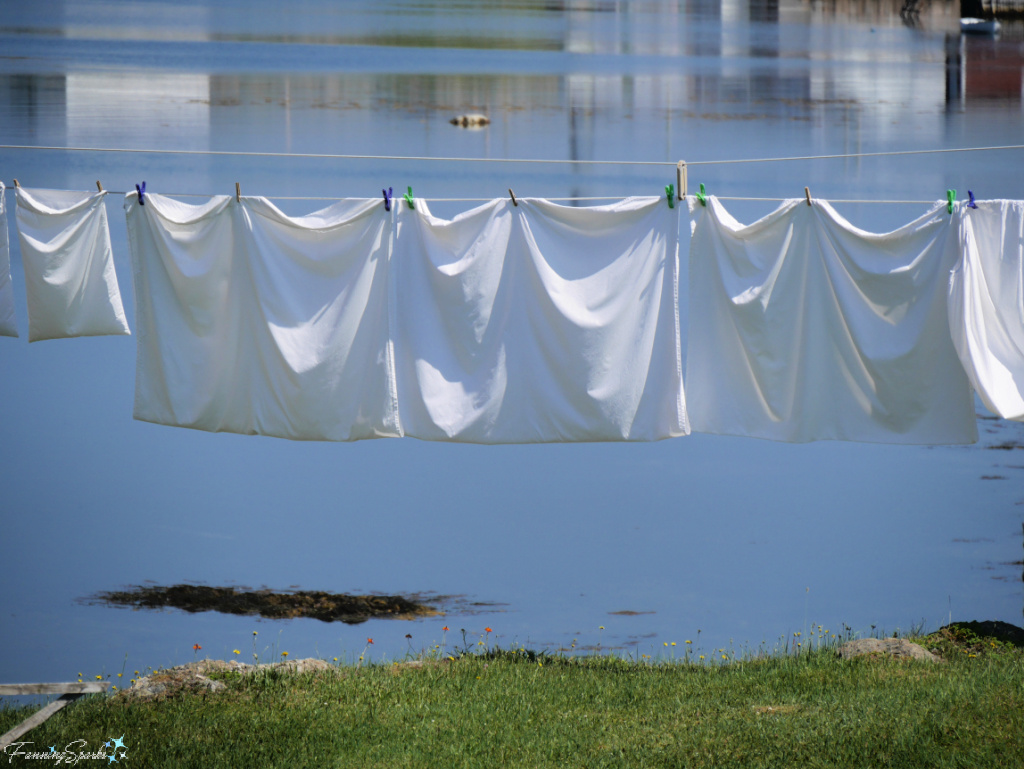
Not only was the weather ideal, the setting was spectacular and the laundry was neatly pinned to the sturdy clothesline. This type of clothesline, typically referred to as a “pulley line”, consists of a continuous loop of line stretched over a pulley at each end. The pulleys are firmly attached to a pole or a stationary surface such as the exterior wall of a house. The biggest advantage of a pulley line is you can stand at one end of the line, usually on a stoop or elevated step, to pin your items in place.
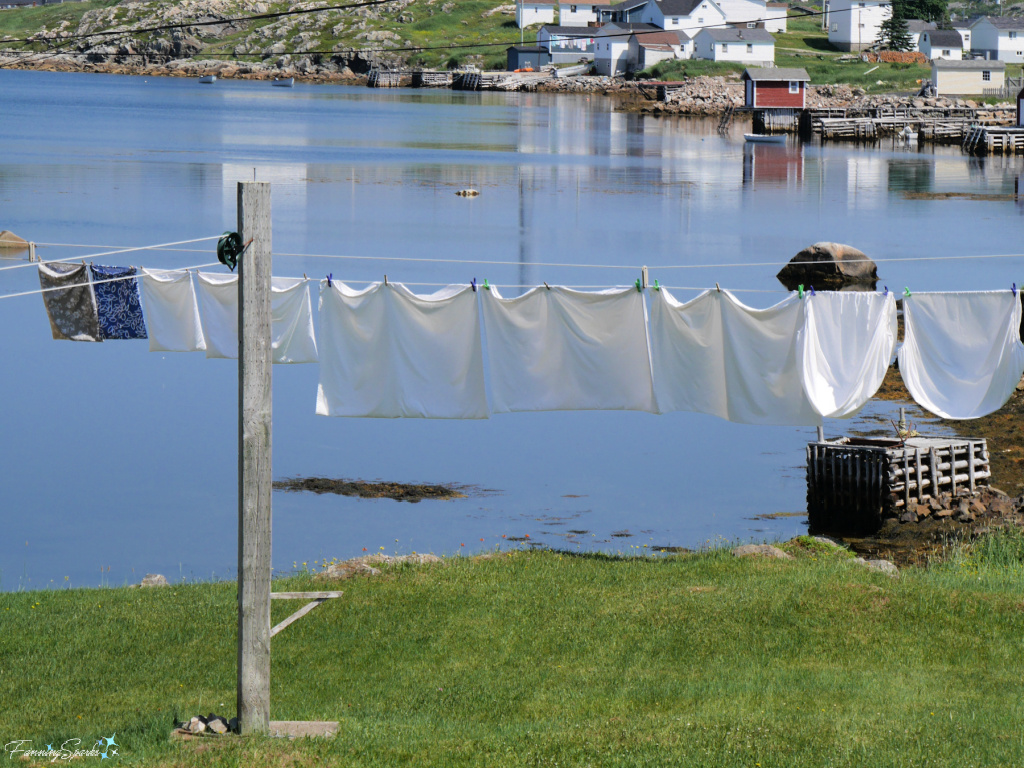
The charming clothesline, shown below, was spotted at the Women’s Institute Craft Shop in Port Union Newfoundland. It’s the perfect way to showcase the beautiful hand-crafted quilts sold at the shop.
 The color echo between the quilts and the wildflowers was a pretty bonus.
The color echo between the quilts and the wildflowers was a pretty bonus.

This style of clothesline is typically called a “prop line” because it is propped up by a pole. The line itself is a single strand stretched between two stationary points. The prop is inserted after the items are hung.
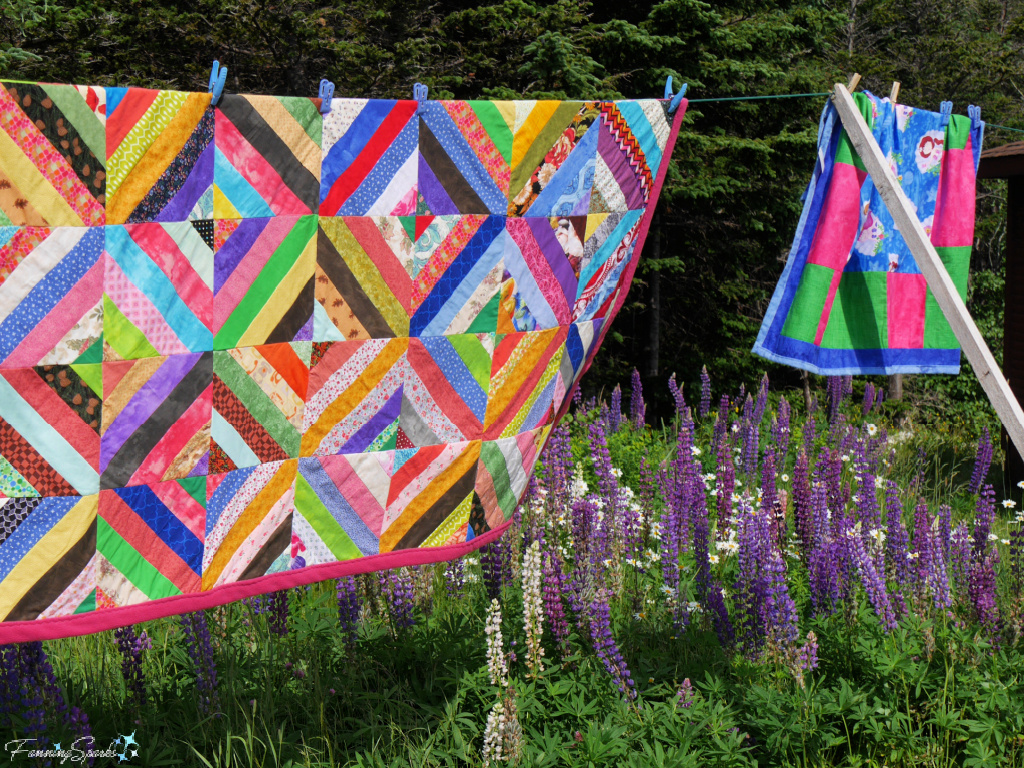
But Newfoundland is not the only place with interesting clotheslines. The very stylish clothesline, pictured below, was spotted near Madison, Georgia. It is a “stationary line” with multiple strands strung between two, post-mounted, cross members.
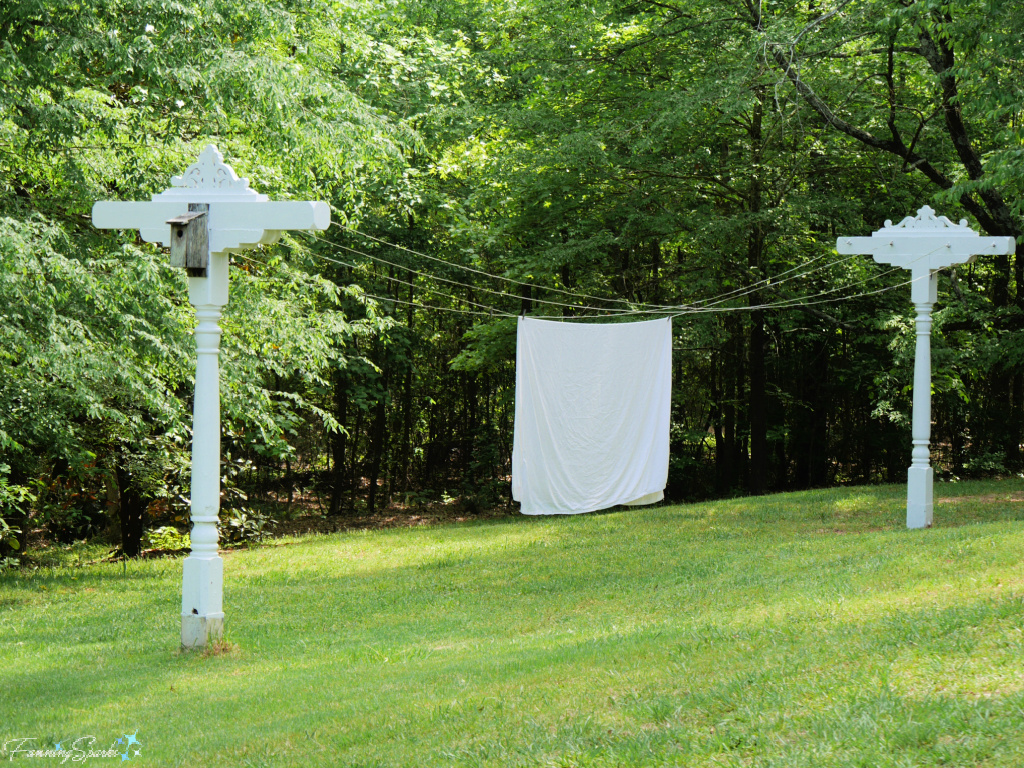
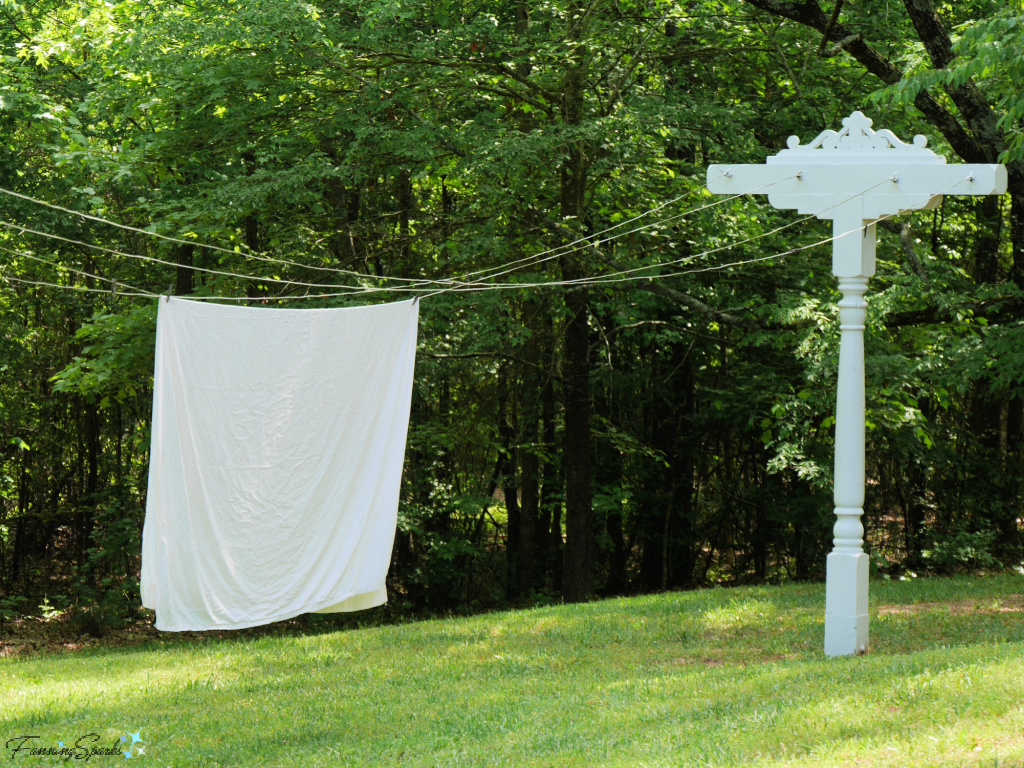
This style of clothesline, which I spotted at Sherbrooke Village in Nova Scotia, is referred to as a “basic line”. It is simply a single strand of line attached at both ends.
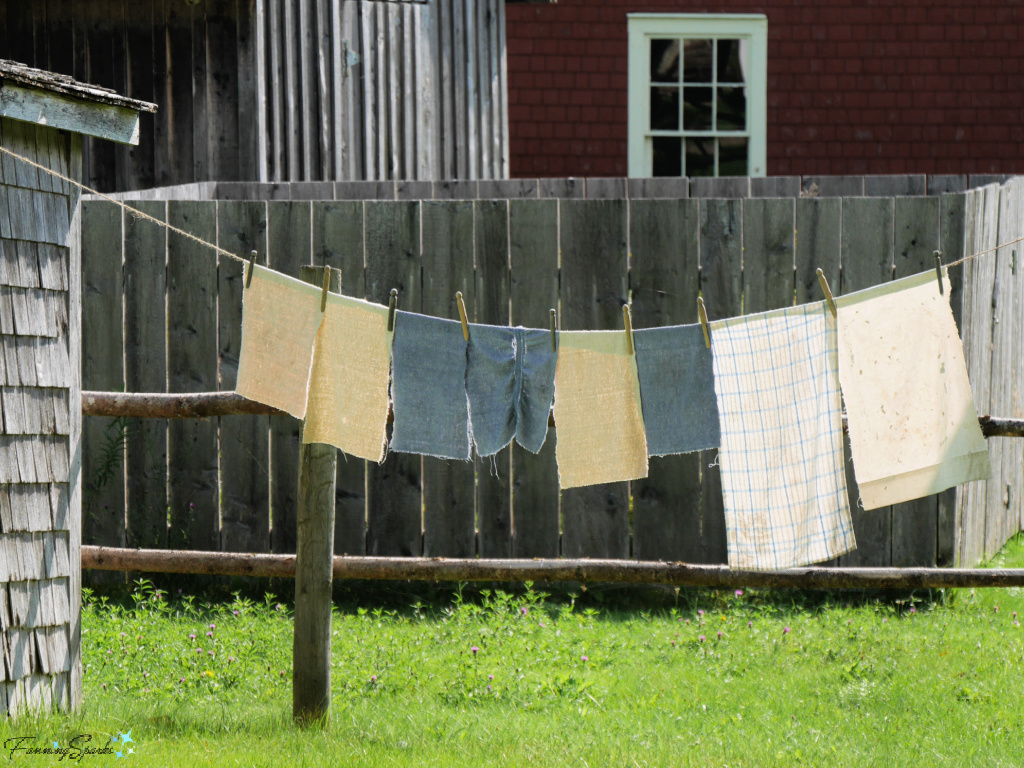
The next few photos show examples of clotheslines and drying laundry from my travels around the world. First up, is one of my all-time favorites taken at the Kinderdijk in the Netherlands. It features a line of laundry flapping in the breeze with 300-year-old windmills in the background.
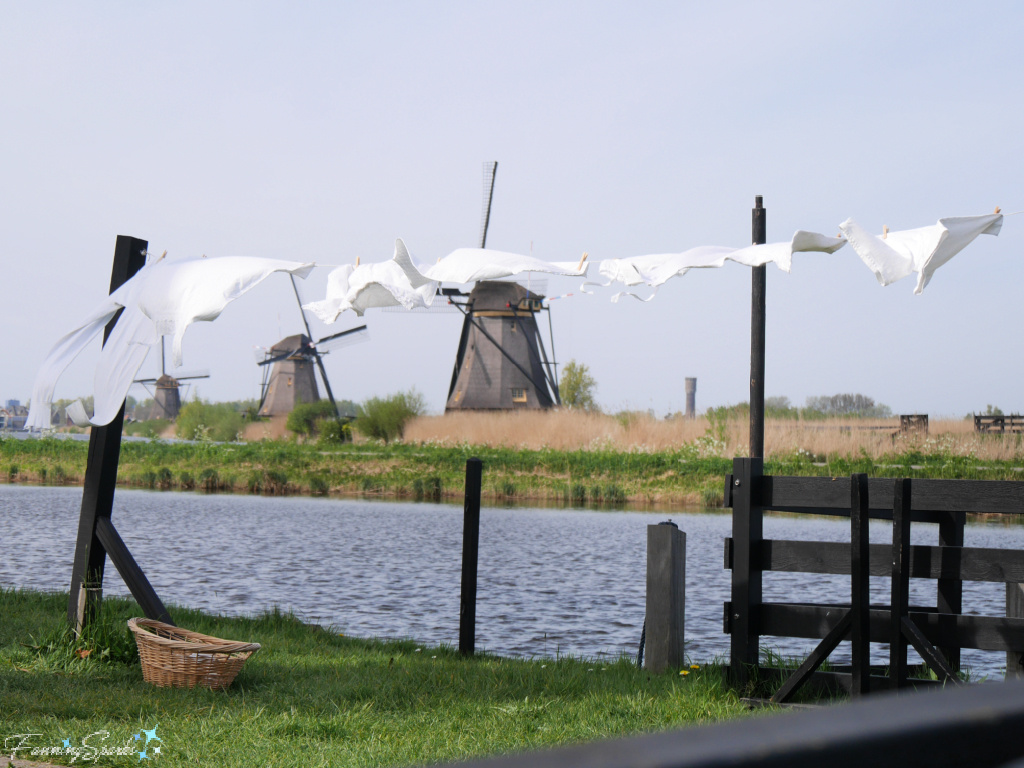 In Belize, I spotted this basic clothesline strung under the roof of a front porch.
In Belize, I spotted this basic clothesline strung under the roof of a front porch.
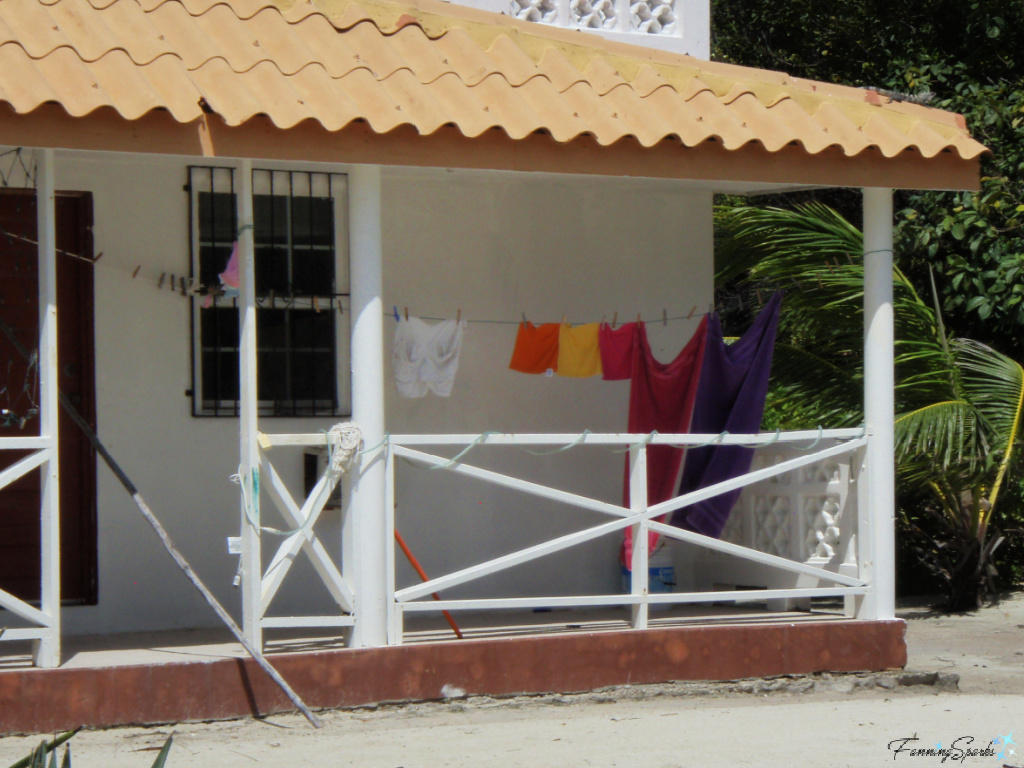
A similar approach is used for this clothesline strung along a balcony railing in Porto Portugal.
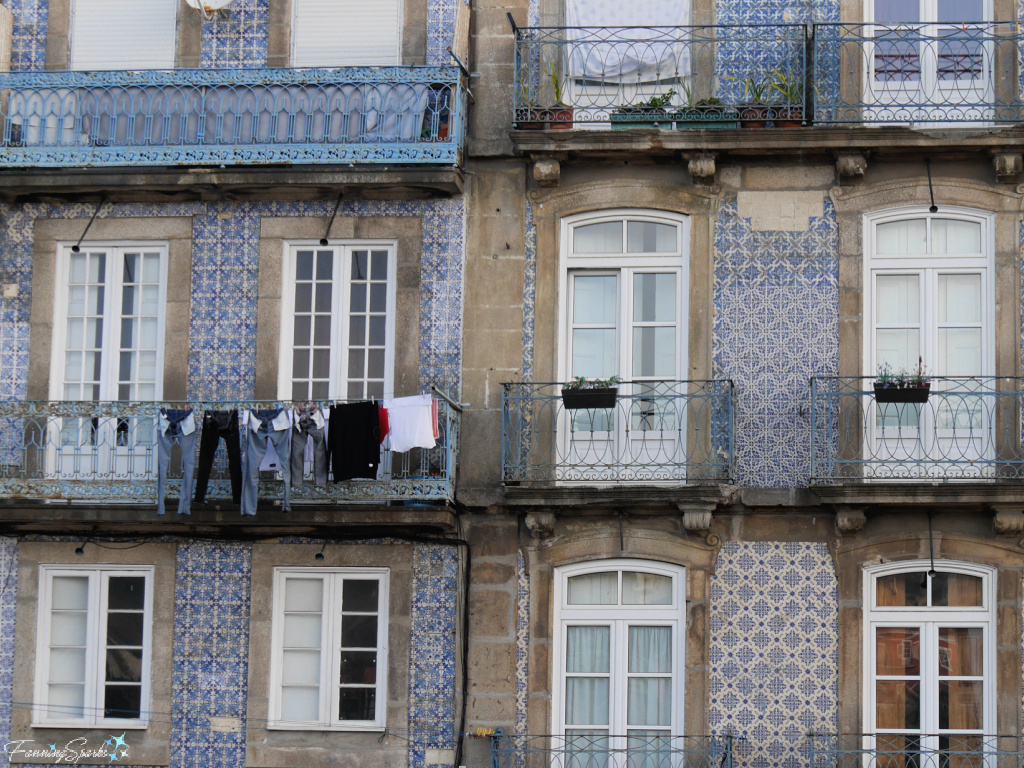
I assume the below clothesline, spotted along the Amalfi Coast in Italy, would be accessed from either the window or the balcony.
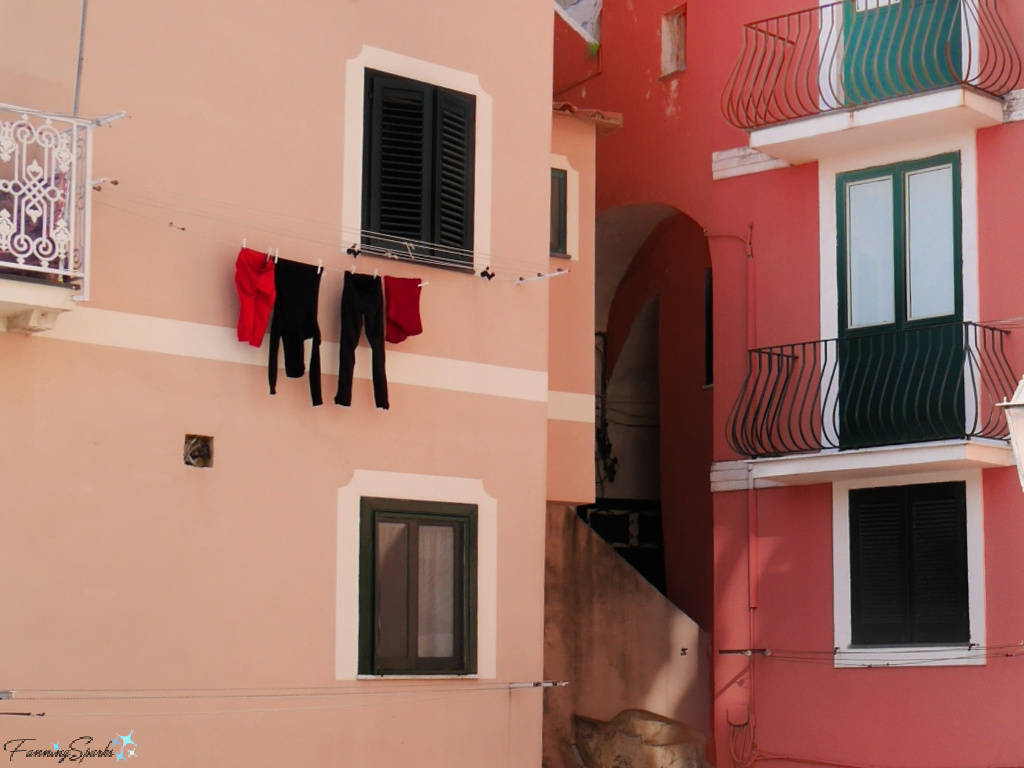 While this drying rack, spotted on the island of Capri Italy, would have to be accessed through the window.
While this drying rack, spotted on the island of Capri Italy, would have to be accessed through the window.
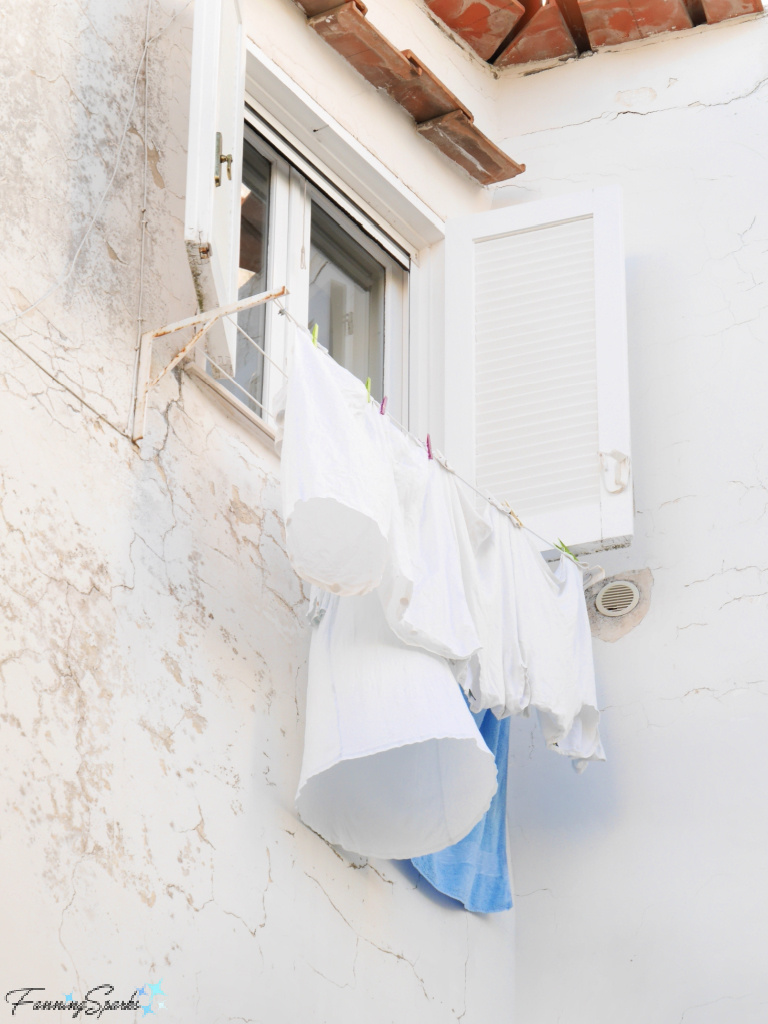
In the busy city of Naples Italy, you can look up to see laundry hanging in a variety of ways—clotheslines stretch across the narrow street and various racks jut out from the balconies.
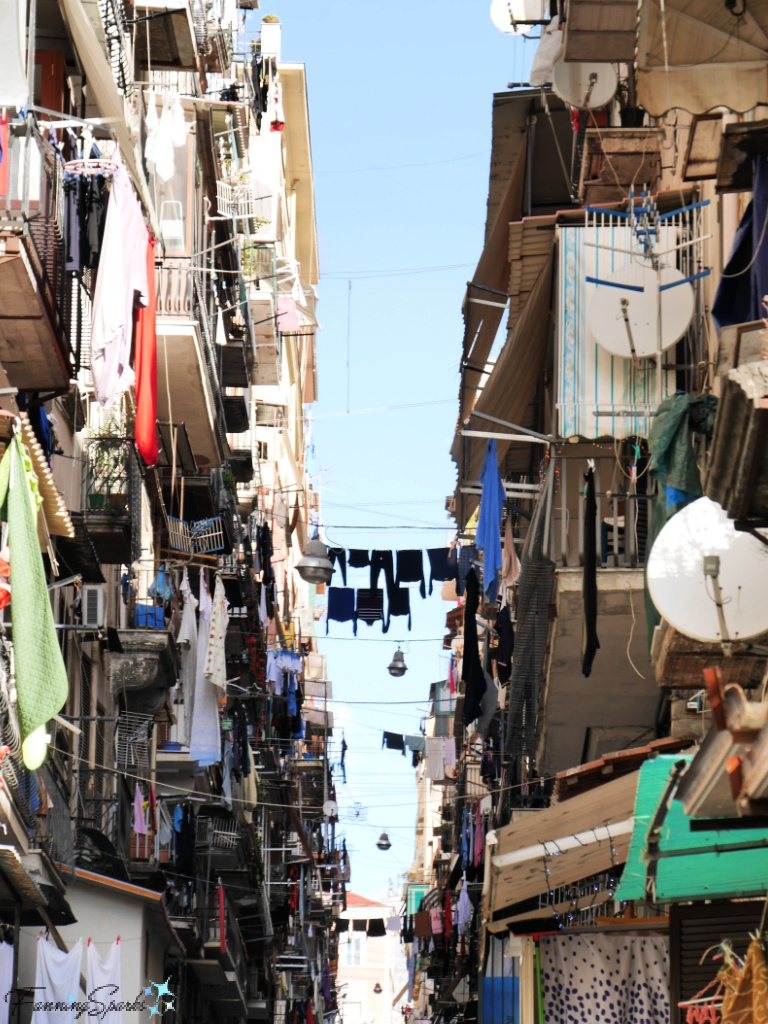
In Singapore, it’s common practice to hang your laundry on long poles sticking out from your balcony.
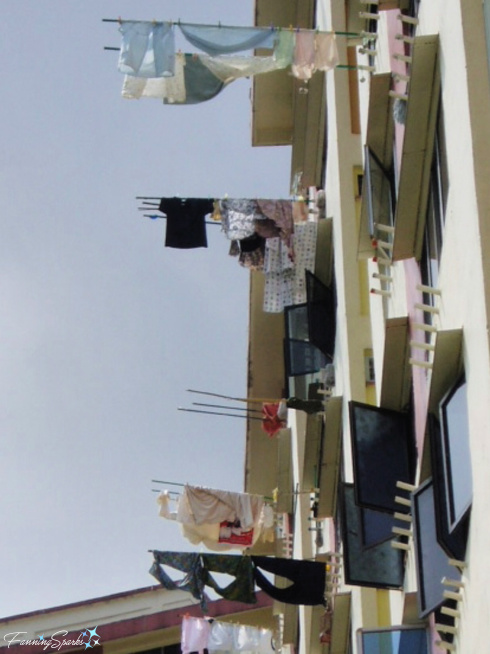 Clothespins are used to temporarily attach items to a clothesline (or pole). The first clothespins, or “clothes pegs” as they are called in some parts of the world, were hand-carved from small lengths of wood. They were eventually replaced with a mass-produced version known as a “dolly peg”. Apparently, the nickname comes from the peg’s round top which resembles a doll’s head. You can see wooden dolly pegs in this photo from Sherbrooke Village.
Clothespins are used to temporarily attach items to a clothesline (or pole). The first clothespins, or “clothes pegs” as they are called in some parts of the world, were hand-carved from small lengths of wood. They were eventually replaced with a mass-produced version known as a “dolly peg”. Apparently, the nickname comes from the peg’s round top which resembles a doll’s head. You can see wooden dolly pegs in this photo from Sherbrooke Village.

Clothespins were much improved with the introduction of a spring-activated, two-prong design. The improved design, introduced around 1850, is essentially the same as those in use today.
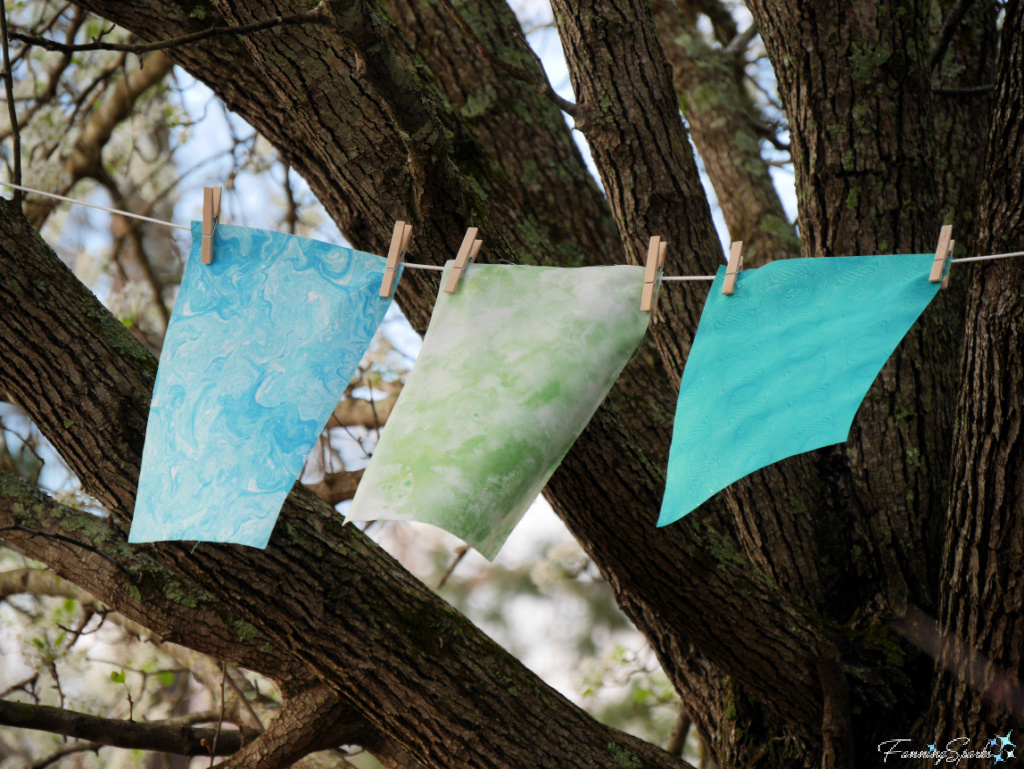 Most clothespins are made of wood but they are also available in metal or plastic such as the blue plastic clip pictured below.
Most clothespins are made of wood but they are also available in metal or plastic such as the blue plastic clip pictured below.
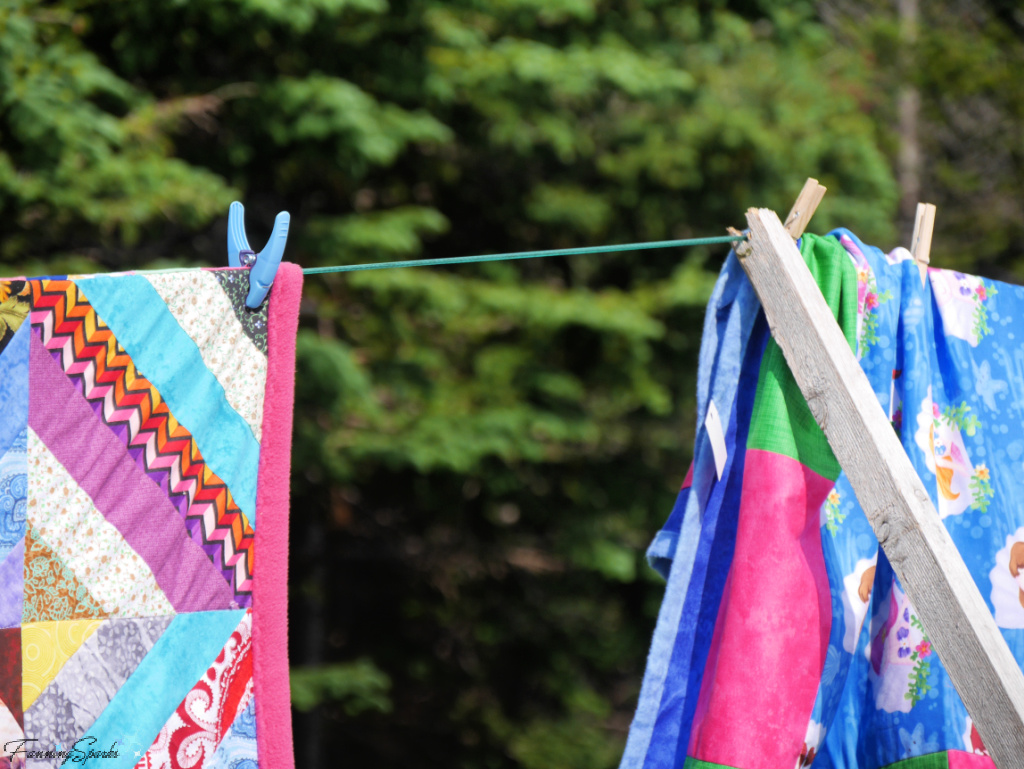 In the same way the Port Union Women’s Institute used a clothesline to present their colorful quilts, clotheslines can display textiles and other products. For instance, earlier this year, I used a twisted gold cord as a clothesline with miniature gold clothespins to showcase these froufrou, miniature-dress sachets.
In the same way the Port Union Women’s Institute used a clothesline to present their colorful quilts, clotheslines can display textiles and other products. For instance, earlier this year, I used a twisted gold cord as a clothesline with miniature gold clothespins to showcase these froufrou, miniature-dress sachets.
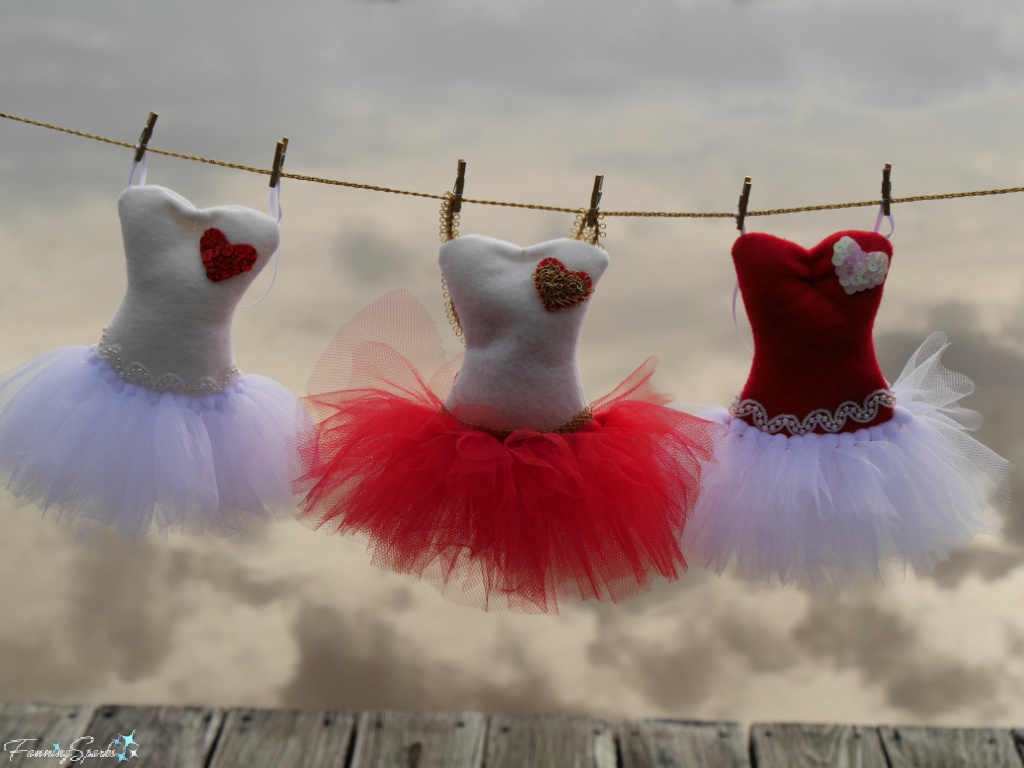 While researching this blog post, I was surprised to discover two different reasons for writing about clotheslines. On the one hand, there are those who actively advocate for the use of clotheslines. They tend to focus on the environmental advantages of letting clothes dry naturally. There is, by the way, a very strong case to be made. Energy Star®, the U.S. Environmental Protection Agency program for energy efficiency, recommends using a drying rack or hanging clothes outside as a best practice. They state “Where and when possible, air-drying clothes instead of using a dryer not only saves energy, but also helps them last longer.”
While researching this blog post, I was surprised to discover two different reasons for writing about clotheslines. On the one hand, there are those who actively advocate for the use of clotheslines. They tend to focus on the environmental advantages of letting clothes dry naturally. There is, by the way, a very strong case to be made. Energy Star®, the U.S. Environmental Protection Agency program for energy efficiency, recommends using a drying rack or hanging clothes outside as a best practice. They state “Where and when possible, air-drying clothes instead of using a dryer not only saves energy, but also helps them last longer.”
On the other hand, there are those who remember clotheslines with nostalgia. Perhaps it’s a yearning for a simpler life or perhaps clotheslines bring back memories of those who cared for us.
My mother always had a clothesline at the back door and hung the laundry out-of-doors for most of her life. We did eventually buy a clothes dryer but she always preferred the clothesline. Here’s Mom in the late 1950’s hanging clothes (cloth diapers, I think) on a cold, winter day in Nova Scotia.
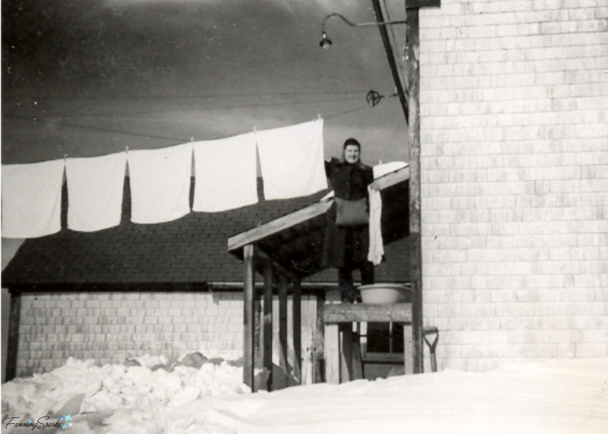
Speaking of the nostalgia of clotheslines, the Children’s Garden at the Coastal Maine Botanical Garden in Boothbay Maine features a child-sized clothesline for children’s play. It was inspired by the children’s book, Rosebud and Red Flannel, written by Ethel Pochocki and illustrated by Mary Beth Owens (both lived in Maine when the book was published in 1991).
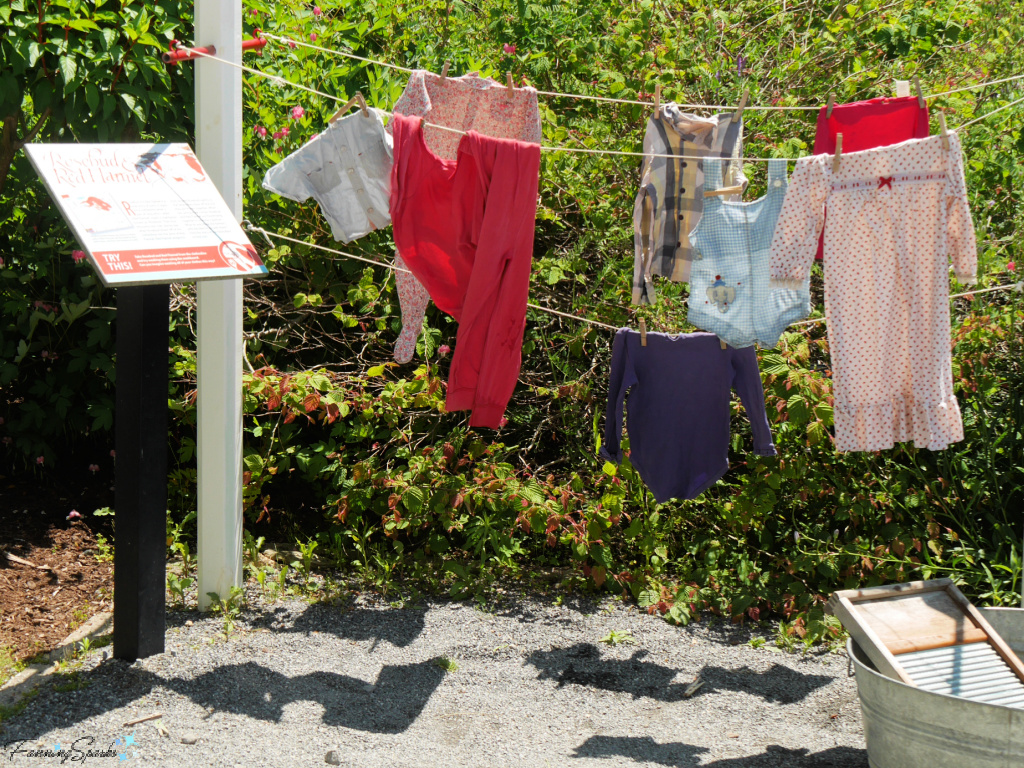
“Rosebud and Red Flannel is a love story of sorts; it starts on a clothesline when a pair of long johns called ‘Red Flannel’ meets a nightgown known as ‘Rosebud’.” explains the exhibit card. Here’s a gorgeous illustration from the book.
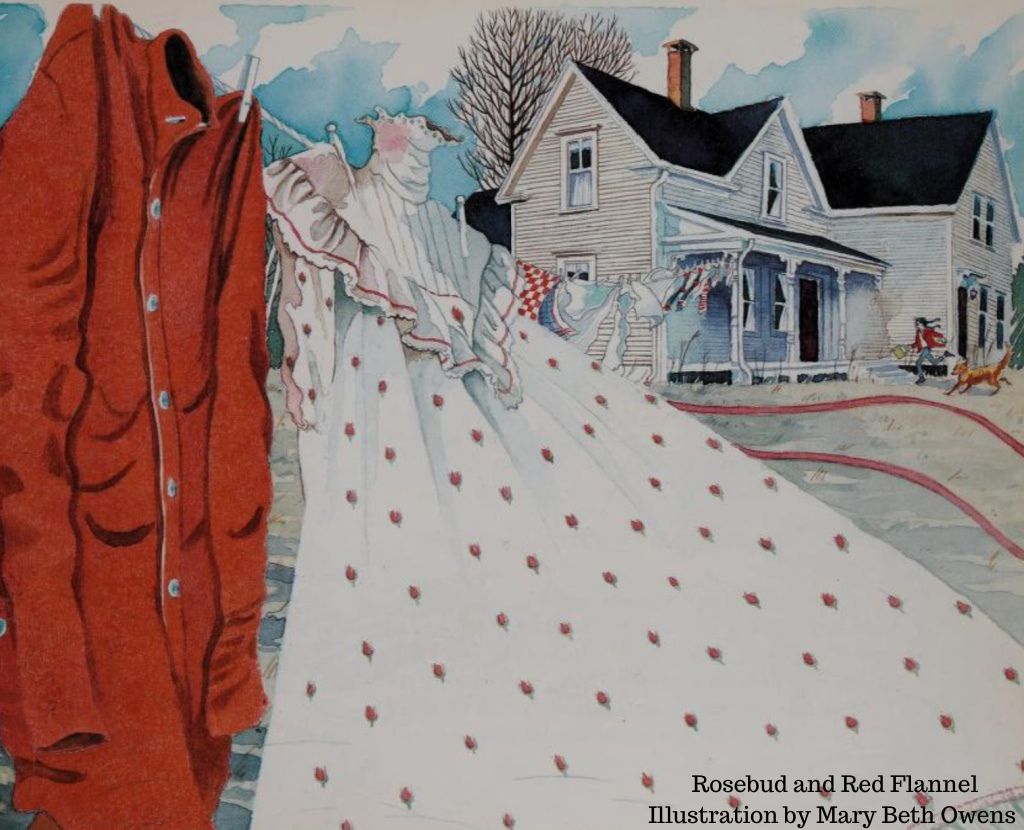
“Their love blossoms one cold, stormy day when Rosebud blows off the clothesline into the arms of Red Flannel. Red Flannel wraps his arms around Rosebud tightly so that when they blow off the line they are frozen together. When the spring thaw comes, Rosebud and Red Flannel are found lying together in a farmer’s pasture.”
Spoiler Alert: The farmer’s wife decides to turn Rosebud and Red Flannel into scarecrows for her garden. “All day they joked and sang and told their deepest thoughts to each other, and at night they danced in the moonlight to the music of the crickets.” Now, there’s a new twist on the standard Hallmark ending!
More Info
The Women’s Institute Craft Shop in Port Union, Newfoundland offers a “beautiful selection of locally hand-made crafts by members of the non-profit Women’s Institute branch”. Check the Port Union-Catalina-Little Catalina Women’s Institute Facebook page for the latest information.
Some of the clotheslines included in this blog post can also be seen in previous FanningSparks’ blog posts:
. Sherbrooke Village is a living museum on the Eastern Shore of Nova Scotia, Canada. You can read more about this fascinating destination in Printer’s Devil for a Day.
. The Kinderdijk UNESCO World Heritage Site in the Netherlands showcases nineteen 300-year-old windmills. Check out Milling the Water of Kinderdijk for the full story.
. For step-by-step instructions to make a miniature-dress sachet, see the blog post, Maker Heart Challenge #3: Froufrou Sachet – DIY Tutorial.
The book, Fine Lines: A Celebration of Clothesline Culture, is written by Nova Scotian auther Cindy Etter-Turnbull (aka Mrs. Clothesline). It “will put to rest any questions you may have about the fine art of hanging out the wash.” The book is available here on Internet Archive.
For more information about laundry best practices or energy efficiency, see the Energy Star® website from the U.S. Environmental Protection Agency.
The charming children’s book, Rosebud and Red Flannel written by Ethel Pochocki and illustrated by Mary Beth Owens, is available here on Internet Archive.
Today’s Takeaways
1. Where and when possible, air-drying clothes instead of using a dryer not only saves energy, but also helps them last longer. Energy Star® website
2. Take time to notice the little things when traveling away from home.
3. There is beauty in the simple tasks of everyday life.


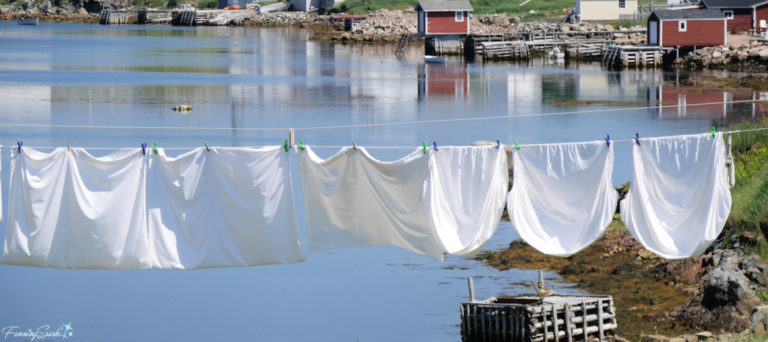


Comments are closed.